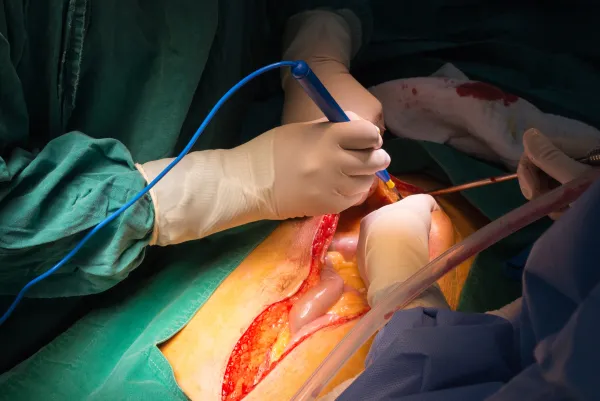Ob-Gyn Coding Alert
Advance Your Extensive Adhesiolysis Claims Towards Approval
Follow these 4 tips, and your claim will pass with flying colors.
If you’re often including lysis of adhesions in the primary surgery, then you could be missing out. You can get paid additionally for the lysis — if the adhesions are extensive.
What they are: Pelvic adhesions are bands of fibrous scar tissue that can form in the abdomen and pelvis after surgery or due to infection. Because adhesions connect organs and tissue that are normally separated, they can lead to a variety of complications, including pelvic pain, infertility and bowel obstruction. Pelvic adhesions commonly form on the ovaries, pelvic sidewalls and fallopian tubes.
Capture Adhesiolysis With These CPT® Codes
Although ob-gyns generally deal with lysis of adhesions in only four sites, CPT® provides six codes for the associated procedures:
Important: Generally, you won’t use these codes if the ob-gyn does anything else.
Rationale: They are included in the primary procedure.
You should separately report adhesiolysis when performed with another procedure(s) only when:
1. lysis of adhesions is extensive
2. the adhesions are in a different anatomic site from the main procedure(s).
Consider Mod 22 for Extensive, Nonincluded Lysis
If the lysis of adhesions is extensive and the Correct Coding Initiative (CCI) or other bundling software includes this extensive service in the primary procedure, you should add modifier 22 (Increased procedural services) to the primary procedure code. Otherwise, you should report extensive adhesiolysis separately.
You should use modifier 22 only rarely. Caution: Every surgeon has cases that are harder than average and ones that are easier, and just because a case is more extensive or time-consuming than another is not sufficient reason to use modifier 22.
To report modifier 22, you should have supporting documentation that details the physician’s extensive time and work effort. Modifier 22 will most certainly initiate a request for information from your carriers, so make sure the operative report substantiates the claim.
The following tips will help you pin down when you should report lysis of adhesions separately.
Tip 1: Separate Codeable From Noncodeable
When determining whether you should code adhesiolysis in addition to the primary procedure, you first have to examine the ob-gyn’s documentation. Carriers usually don’t reimburse separately for removing soft, filmy adhesions by blunt dissection when the physician performs the lysis with other procedures. Documentation must describe the significant work associated with the removal (using sharp dissection and sometimes laser) of adhesions that are dense, very adherent and have a blood supply.
Example: the ob-gyn documents that while performing abdominal surgery, he lysed adhesions that were dense, anatomy-distorting and took a very long time. In this case, you may be able to get more reimbursement by adding a modifier 22 to the abdominal surgery code, because the chances are good that the code for enterolysis (44005) will be bundled and when bundled, it may not be reported with a modifier to report the code separately. You may not report 58740 for the lysis of intestinal adhesions since that code represents only the lysis of ovarian or fallopian tube adhesions, not those in other locations.
Tip 2: Differentiate Bowel and Pelvic Adhesions
Establishing where the surgeon lysed the adhesions is the next major step to determine which code to select. If the ob-gyn performed adhesiolysis of bowel/intestinal adhesions, you would report 44005 or 44180, if appropriate, depending on the approach. If the physician lysed ovarian or fallopian tube adhesions, you should submit 58660 or 58740, if appropriate, depending on the surgical approach used. Note that the CPT® Assistant (December 2011) clarified that you can only report 58660 for adhesions on the uterine adnexa, but if found in other sites (such as the cul-de-sac, pelvic walls, omentum), you would need to report the unlisted code (49329, Unlisted laparoscopy procedure, abdomen, peritoneum and omentum) instead. A similar logic would apply to the open code 58740, but in that case the unlisted code would have to be 49999 (Unlisted procedure, abdomen, peritoneum and omentum).
Example: The surgeon notes that during a laparotomy, he encounters dense adhesions involving the bowel, which require two hours of adhesiolysis to adequately expose the uterus and pelvis so he could perform a hysterectomy. Based on this information, you might incorrectly report 44005 in addition to 58150 (Total abdominal hysterectomy [corpus and cervix], with or without removal of tube[s], with or without removal of ovary[s]).
But CCI bundles 44005 into 58150 with a “0” modifier indicator, meaning no modifier can override the edit. Therefore, you should report the extra work involved with the extensive adhesiolysis by appending modifier 22 to 58150.
Tip 3: Learn When Adhesiolysis Changes Approach
Occasionally, an ob-gyn attempts a procedure laparoscopically, but because of extensive adhesions, he must change to an open approach to complete the surgery. In this case, Medicare rules — and those of the many payers that follow Medicare — bundle the laparoscopy into the open procedure, so you can’t report it separately. The only option is to report the primary surgery appended with modifier 22.
Suppose the ob-gyn surgeon inserts the laparoscope intending to perform a urethral sling. Upon inserting the scope, he finds massive adhesions on the bowel’s left side adhering not only the bowel to the pelvic sidewall but also the left tube and ovary. The right side is even worse. After attempting to remove the adhesions for an hour with little success, the physician decides to convert to a laparotomy to complete the procedure.
Because the surgeon took significant additional time attempting to perform the procedure laparoscopically, you should report 57288-22 (Sling operation for stress incontinence [e.g., fascia or synthetic]). Quantifying the additional time and specifying the increased effort in the documentation is crucial for reimbursement success, experts say. Words to look for in the record might include “very difficult,” “unusually difficult,” and so on.
In addition to reporting the time in the procedure note, include a cover letter that compares the additional time and effort to the average time and effort the procedure usually takes. The details that made the procedure difficult provide a better level of understanding to the insurance reviewer who may not be aware of the typical efforts involved in the procedure.
Tip 4: Estimate Dollar Amount When Using Mod 22
Experts say if you are not adding a dollar amount before submitting to your carriers, you are doing yourself a disservice.
When submitting a claim that includes modifier 22, you should include an estimate of what you expect to be paid for the extra work involved in the procedure. Otherwise, you are leaving the decision up to the carriers, and they will potentially base your reimbursement on their standard allowable. Including a dollar amount doesn’t mean the payer will reimburse based on your charge, but as with all submissions, you don’t want to leave the decision entirely up to the carrier.
Related Articles
Ob-Gyn Coding Alert
- Obstetrics:
Pregnant Diabetic Patients? Justify Extra Reimbursement With This Advice
Hint: Diabetes before pregnancy is different from gestational diabetes. If you’ve run into a situation [...] - Gynecology:
Advance Your Extensive Adhesiolysis Claims Towards Approval
Follow these 4 tips, and your claim will pass with flying colors. If you’re often [...] - You Be the Coder:
Trichorionic Triamniotic Triplet Gestation
Question: I have a triplet pregnancy that says it is “Trichorionic Triamniotic triplet gestation.” What would [...] - ICD-10:
Process How Your Polyp Codes Will Shift After October 1, 2015
For “mucous polyp of cervix,” report this ICD-10 code. Polyps are small growths on the [...] - Reader Questions:
Heart Murmurs Can Be Functional
Question: We have an ob patient who was just diagnosed with a heart murmur. The doctor [...] - Reader Questions:
Seize These Two Skene's Gland Cyst Options
Question: Patient has a cyst on Skene’s gland, and I’m trying to find a procedure code. [...]




